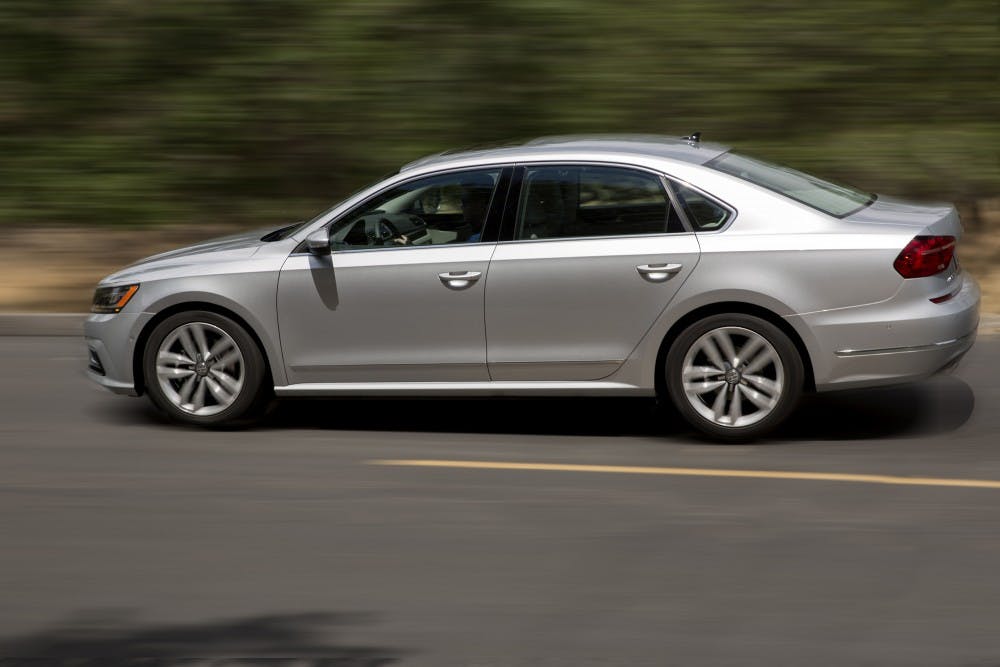If you drive a car, especially an older one, you might find yourself with a flat tire or other car problems at some point or another, said Muncie auto mechanic Steve Dane.
After changing thousands of flat tires, Dane said it’s not even hard for someone to change a car tire.
With his 10-step process, Dane said understanding the basics is all you really need to get the job done.
Here’s what he suggests:
- Find a flat, stable and safe place to change your tire where it will restrict the car from rolling. If you are near a road, park as far away from traffic as possible and turn on your hazard lights. Avoid soft ground and hills.
- Apply the parking brake and put the car into the "park" position. If you have a standard transmission, put your vehicle in first or reverse and place a heavy object — like a rock — in front of the front and back tires.
- Place the jack under the frame near the tire that you are going to change. Make sure the jack is in contact with the metal portion of your car's frame.
Many cars have molded plastic along the bottom. If you don't place the jack in the right spot, it will crack the plastic when you start lifting. If you're not sure about the right place to put the jack, read your owner's manual.
For most modern cars, there’s a small notch or mark just behind the front wheel wells, or in front of the rear wheel wells where the jack is intended to be placed.
- Raise the jack until it’s supporting (but not lifting) the car. The jack should be firmly in place against the underside of the vehicle, perpendicular to the ground.
- Remove the hubcap and loosen the nuts by turning counterclockwise. Don't take them all the way off, just break the resistance. Use the wrench that came with your car or a standard cross wrench.
- Pump or crank the jack to lift the tire off the ground. You need to lift it high enough to remove the flat tire and replace it with a spare. As you lift, make sure the car is stable. If you notice any instability, lower the jack and fix the problem before fully lifting the car.
- Remove the nuts the rest of the way, and remove the tire. Place the flat tire under the vehicle so in the event of a jack failure the vehicle will fall on the old wheel, hopefully preventing injury.
- Place the spare tire on the hub and align the rim of the spare tire with the wheel bolts, then put on the lug nuts. Be sure to install the spare tire the correct way and not backwards.
- Tighten the nuts by hand until they’re snug. Using the wrench, tighten the nuts as much as possible using a star pattern. To ensure the tire is balanced, don't completely tighten the nuts one at a time. Going in a star pattern around the tire, one nut across from another, give each nut a full turn until they’re equally tight.
- Lower the car without applying full weight on the tire and tighten the nuts as much as possible. Then, lower the car to the ground fully and remove the jack. Finish tightening the nuts and replace the hubcap.
While getting a flat tire might be inevitable, other vehicle issues can be avoided with regular car maintenance.
Here are some simple tips to keep your car running longer and more efficiently:
Watch the brake
The maintenance of brakes is vital, Dane said. Have them checked annually by a professional and be aware of the signs of wear, including delayed response when pushing on your brake pedal, the brake light appearing on your dashboard or any high-pitched squeal or harsh grinding sounds.
Change oil often
Change your oil about every three months, or check your owner's manual for the manufacturer's recommended oil change intervals. This ensures you’re doing your part to maintain the frequency of oil changes your car needs. Always be sure to check for proper oil levels when preparing for any long trip you may be planning.
Change power steering fluid
This part of your vehicle helps you to steer with minimal effort, Dane said. Be sure to have the power steering fluid changed every 50,000 miles or every three years. If your fluid level is low, you may have a leak, which will need to be reviewed by a mechanic.
Replace air filter
The air filter prevents airborne contaminants from being pulled into your car's engine. Because wear is dependent on the amount of driving, Dane advised drivers to have their air filters replaced about every 15,000 miles to improve fuel economy, emissions and performance.
Replace engine coolant
In order to keep your engine running efficiently, engine coolant removes excess heat. Most antifreeze or engine coolants can last from 30,000-50,000 miles, or about three years. You can check your engine's level by locating the plastic coolant reservoir under your hood.
Maintain tire pressure
Because a change in temperature can dramatically impact tire pressure, Dane said it’s important to check tire pressure with extreme weather changes, or to be on the safe side, every couple months.
Rotate your tires
To keep the amount of wear on tread even, minimize vibration of wheels and prolong the performance of your tires, get your tires rotated regularly. Dane recommends a rotation around every 4,000 miles or when you go in for oil changes.





